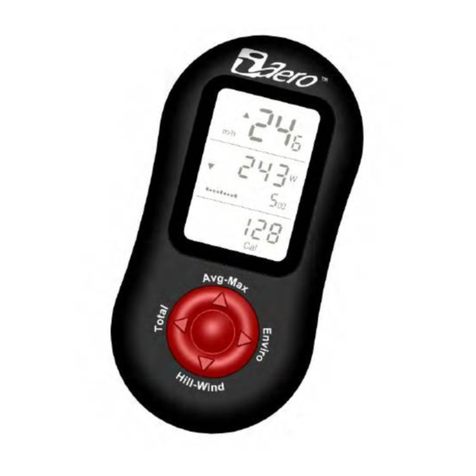PERFORM THE “FAST START” SEQUENCE
The FAST START sequence must be performed one time, for each different bicycle.
CRITICAL: BEFORE PERFORMING THE FAST START SEQUENCE, ATTACH YOUR IBIKE TO
YOUR MOUNT. SEE “IBIKE MOUNT INSTALLATON” INSTRUCTIONS FOR INFORMATION
REGARDING MOUNT AND SENSOR INSTALLATION.
Enter Setup. Note that when a new battery is inserted in to the iBike, the screen “YES
FAST START” appears automatically when the user enters Setup.
If, after entering Setup, the iBike screen does not say YES FAST START, remove the iBike
battery and reinsert it. Then, enter Setup. Your iBike will say “YES FAST START”.
NOTE: IF THE FAST START SEQUENCE HAS ALREADY BEEN PERFORMED, EITHER BY YOU
OR SOMEONE ELSE, THERE IS NO NEED TO REPEAT THE FAST START SEQUENCE.
With the screen “YES FAST START” showing, click the up arrow to start the Fast Start
sequence.
•“UNITS”
Select between English and metric units; the iBike default setting is English units. To
change units, click the center button. The screen flashes, indicating that the selection can
be changed by clicking the up arrow. Click the up arrow once; the units change to metric
(KM/hr, etc.). To change back to English, click the up arrow again. The screen again
flashes English units (m/h, etc.). Once you’ve selected the units you want, confirm and
memorize your choice by clicking the center button.The message “done” flashes and
the iBike advances to the next setup step, “TIRE CIRC”.
NOTE: TO SKIP A SETUP STEP, CLICK THE UP ARROW.
•“TIRE CIRC”
Enter the circumference of your tires, measured in millimeters. The factory default is 2096
mm (700 x 23C). Click the center button. The current setting of tire circumference is
shown and the left-most digit flashes. The digit that is flashing can be adjusted with the up
and down arrows. To select a different digit for adjustment, use the left and right arrows.
Enter your tire circumference, then click the center button. “Done” will flash, and the iBike
advances to the next setup screen, “TOTAL WGHT”.
•“TOTAL WGHT”
Enter the total weight of you, your bike, and your bike gear.
IF YOU HAVE A LIGHT BIKE SETUP, ADD ABOUT 24 POUNDS TO YOU BODY WEIGHT. IF
YOU HAVE A MORE TYPICAL BIKE SETUP, ADD ABOUT 30 POUNDS TO YOUR BODY
WEIGHT.
When the total weight is entered click the center button. “Done” will flash, and the iBike
advances to the next setup screen, “EST AERO”.





























